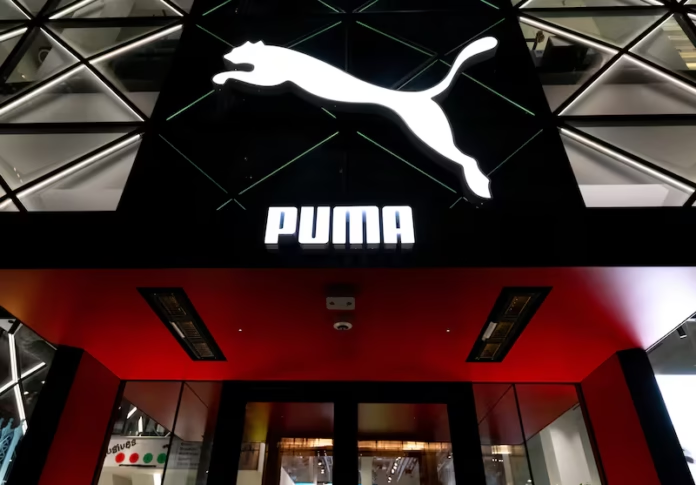Puma SE stock experienced its biggest drop in decades after the German sportswear company drastically reduced its full-year forecast, citing weak global demand. Jefferies described the preliminary earnings report as a “major profit warning,” while RBC indicated that the brand is grappling with an “existential identity crisis” as it tries to maintain relevance in international markets.
Key points from the preliminary earnings release reveal that second-quarter sales fell short of expectations, the full-year outlook has been downgraded, and Puma anticipates further challenges due to U.S. tariffs. Additionally, inventories are climbing as demand for its products continues to wane.
Puma Q2 2025 Earnings Snapshot:
- Adjusted EBIT: –€13.2 million (compared to Goldman Sachs consensus of +€101.8 million)
- Sales (currency-adjusted): –2.0% YoY (versus consensus of +1.7%)
- Direct-to-consumer (DTC): +9.2%
- Wholesale: –6.3%
- Gross Margin: 46.1% (down 70bps YoY; consensus at 46.8%)
- EBIT Margin: –0.7% (down 620bps YoY; consensus at +4.9%)
Regional Sales vs. Consensus (YoY, cFX):
- Europe: –3.9% (vs. +2.3%)
- North America: –9.1% (vs. –5.7%)
- Greater China: –3.9% (vs. –5.8%)
- Latin America: +16.1% (vs. +9.8%)
- APAC: –2.4% (vs. +4.1%)
- EEMEA: +0.5% (vs. +11.4%)
Inventories:
- Increase of 9.7% YoY (or +18.3% cFX), largely due to high levels in key markets.
Puma’s revised FY25 guidance indicates significant distress:
- U.S. tariffs expected to impact gross margin by ~€80 million
- cFX sales now projected to decline in low double digits (previously low-to-mid single-digit growth; consensus at +1.8%)
- Adjusted EBIT now anticipated to be negative, factoring in tariffs and restructuring costs (down from a previous range of €445–€525 million)
- Capex reduced to €250 million (from €300 million)
Analyst Natasha de la Grense from Goldman commented on Puma’s outlook, noting a significant Q2 miss and trends indicating worse performance in the second half of the year. With a second-quarter cFX decline of 2% (consensus was +2%), and now guiding for a low double-digit decline for the year, it suggests a potential drop of over 20% in H2. This could be due to wholesale order cancellations and increased inventory levels.
Additional insights from institutional analysts include:
- Jefferies (hold): The expected 2% drop in Q2 sales was below the consensus for stable revenue; North America, Europe, and Greater China all underperformed, particularly in apparel.
- RBC (sector perform): Puma is facing an “existential identity crisis” in a competitive market, especially as Nike is regaining strength. With inventory up 9%, increased clearance sales are likely as new CEO Arthur Hoeld prepares for a more streamlined FY26.
- Citi (neutral): Significant FX headwinds were noted in Q2, with expectations of a negative reaction in share prices.
In Germany, Puma shares have plummeted as much as 19%, marking the steepest decline since August 8, 1991.
The Services and the Content are provided to you solely for your general informational purposes, and should not be considered as legal, tax, accounting, financial or investment advice.You are solely responsible for determining whether any investment is suitable for you, considering your investment objectives, risk tolerance and personal financial situation. It is also your responsibility to evaluate the merits and risks of using the information provided on this site before making any decisions.

